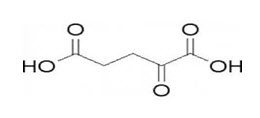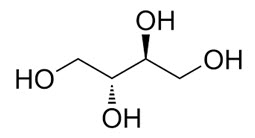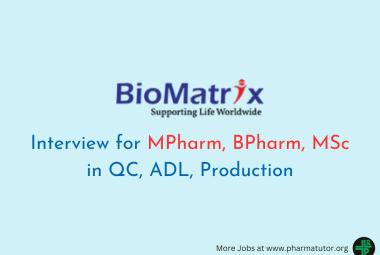{ DOWNLOAD AS PDF }
 ABOUT AUTHORS
ABOUT AUTHORS
Saptarshi Samajdar1, Amiya Kr. Ghosh2
1Centre for Pharmaceutical Sc. And Natural Products, Central University of Punjab
2Dept. of Pharmacy, Utkal University, Orissa
*saptarshisamajdar20@gmail.com
ABSTRACT: SesbaniaSesban Linn. (Family: Fabaceae) found all through the fields of India and ordinarily called as Jayanti. Herbals which shape a piece of our nourishment and give us an extra helpful impact are sought after and SesbaniaSesban Linn. is one of such plant. The plant has got great restorative significance. Blooms contain cyanidin and delphinidinglucosides, Pollen and dust tubes contain alphaketoglutaric, oxaloacetic and pyruvic acids. The leaves of Sesbania is additionally found to have hepatoprotective and powerful hostile to oxidant and against urolithiatic action. The ethanolic and fluid extraction of various parts of Sesbania. The present survey outlines the different pharmacological activities of Sesbaniasesban Linn.
[adsense:336x280:8701650588]
REFERENCE ID: PHARMATUTOR-ART-2501
|
PharmaTutor (Print-ISSN: 2394 - 6679; e-ISSN: 2347 - 7881) Volume 5, Issue 7 Received On: 24/02/2017; Accepted On: 21/03/2017; Published On: 01/07/2017 How to cite this article: Samajdar S, Ghosh AK;Pharmacological effects of Sesbania sesban Linn : An overview; PharmaTutor; 2017; 5(7); 16-21 |
INTRODUCTION:
The World Health Organization (WHO) appraises that around 80% of individuals living in developing nations depend only on conventional drugs for their essential medicinal services needs. India is essentially a herbarium of the world. Sesbaniasesban Linn. is outstanding restorative plant very much circulated all through India and other tropical nations it is found all through the fields of India. Sesbaniasesban, normally known as 'Egyptian sesban' is one of the six types of class Sesbania which is generally observed to be developed in tropical locale of India. The plant is broadly developed for its nitrogen settling capacity and as wind shades. As indicated by ethno restorative claims the poultice of leaves of S. sesban advances suppuration of boils and abscesses and retention of provocative rheumatic swellings.
Plant Profile :
Kingdom : Plantae
(unranked) : Angiosperms
(unranked) : Eudicots
(unranked) : Rosids
Order : Fabales
Family : Fabaceae
Genus :Sesbania
Species : S. Sesban
Common names : Arabic : sesaban Bengali : jainti, jayant English : common sesban, Egyptian rattle pod, frother, river bean, sesban, sesbania Hindi : jainti,jait,rawasa Sanskrit :jayanti, jayantika
BOTANY:
Sesbania is an erect, branched, stout, shrubby plant, 2 to 3 meters in height. Leaves are 10 to 20 centimeters long, with 9 to 20 pairs of leaflets. Leaflets are oblong, 2 to 3 centimeters long. Flowers are few, yellow, about 1.5 centimeters long, borne on axillary racemes about 10 centimeters in length. Pods are subcylindric or somewhat flattened, slightly twisted, pendulous, about 20 centimeters long, 3 millimeters wide, and depressed between the seeds.

Fig: Sesbaniasesban Linn
PHYTOCHEMICALS: Preliminary phytochemical screening uncovered the presence of triterpenoids, starches, vitamins, amino acids, proteins, tannins, saponins glycosides and steroids. Blossoms contain cyanidin and delphinidinglucosides. Dust and dust tubes contain alpha-ketoglutaric, oxaloacetic and pyruvic acids. Leaf and unit contains ampesterol cholesterol, beta-sitosterol, triterpenoids, proteins and tannins. Bark and stem contains glucose, fructose, erithryrol, arabinitol, myo-inositol. Different sorts of lignins made out of guaiacyl, syringyl and P-hydroxyphenylpropane building units and furthermore antitumor vital kampferol disaccharide
• Cyanidin: (PubChem:128861)

Uses: Various effects in cells, most of which can be described as being anti-diabetic and possibly slightly benefit other parameters associated with 'metabolic syndrome' (anti-inflammatory, anti-oxidant, etc.)
• Delphinidin: (PubChem:68245)

Uses: Same as Cyanidin.
• Alpha ketoglutaricacid (PubChem:51)

Uses: Known for its nitrogen carrying and its antioxidant activities.
• Oxaloaceticacid (PubChem:970)

Uses: Helps in gluconeogenesis, fatty acid synthesisand amino acid synthesis.
• Campesterol (PubChem:173183)

Uses: It is a precursor of anabolic steroids and also used in Cardiovascular diseases. The main adverse effects are decrease of lycopene levels and beta carotene, some rare cases of haemolytic anaemia can also be observed.
• Beta-sitosterol (PubChem:222284)

Uses: High cholesterol. Taking beta-sitosterol significantly lowers total and bad (LDL) cholesterol levels, but it does not raise good (HDL) cholesterol levels.
Trouble urinating because of an enlarged prostate, or “benign prostatic hyperplasia” (BPH).
• Erythritol (PubChem:222285)

Uses: Used as a natural sweetener, erythritol is about 60 – 80% as sweet as sucrose (sugar). It is used primarily in chewing gum, baked goods and beverages and occurs naturally in pears, soy sauce, wine, sake, watermelon and grapes.
• Arabinitol (PubChem:94154)

Uses: It is a reagent for organic tests
• Myo-inositol (PubChem:892)

Uses: Inositol is used for diabetic nerve pain, panic disorder, high cholesterol, insomnia,cancer, depression, schizophrenia, Alzheimer’s disease, attention deficit-hyperactivity disorder (ADHD), autism, promoting hair growth, a skin disorder called psoriasis, and treating side effects of medical treatment with lithium.
Inositol is also used by mouth for treating conditions associated with polycystic ovary syndrome, including failure to ovulate; high blood pressure; high triglycerides; and high levels of testosterone
PHARMACOLOGICAL PROFILE:
Seed, bark and leaves of the plant are used in traditional medicine. Seeds are used in diarrhea, excessive menstrual flow, to reduce enlargement of spleen and in skin disease. Leaves are used in inflammatory rheumatic swelling and as anthelmintic also as anti microbial agent.
Antioxidant activity:Saponin, Tanin, Phenolic compound,Anthocyanins were extracted with methanolic and acidified methanol from the Sesbaniasesban flower petals and their antioxidant properties were investigated. DPPH scavenging activity or the Hydrogen donating capacity was quantified in presence of stable DPPH radical on the basis of Blois method.Compounds from Sesbaniasesban flower petals exhibited a dose dependent free-radical scavenging activity against DPPH radical, superoxide anions and hydroxyl radical.
Anti inflammatory activity: The leaves of Sesbaniasesban evaluated the topical antiinflammatory activity of the crude saponins extract by carrageenan induced rat paw edema method by preparing the gel formulation. The activity was carried on Wistar albino rats, receiving two strengths of crude saponin gel at a concentration of 1% w/w and 2%w/w respectively and Diclofenac sodium gel was used as reference drug. Study showed the topical formulation of crude saponins extract showed significant anti-inflammatory activity, comparable to the activity of the reference drug, diclofenac. Crude saponin extract showed significant anti-inflammatory activity in in vivo and in vitro models. Effect may be contributed to by the crude saponin with its triterpenoid and steroidal moiety which protect inflammatory mediators.
Anthelminthic activity: The anthelmintic activity of aqueous extracts from 14 plants species from 7 families in the Sudanese flora was evaluated using the free living nematode, Caenorhabditiselegans as test organism. Extracts of Balanitesaegyptica and Sesbaniasesban were the most effective (LC50 0.8 and 8.0 mg/mL respectively). Study evaluated the hydroalcoholic and aqueous leaf extract of Sesbaniasesban against Moneiziaexpansa and Paramphistomes. Both extracts were found effective against the two organisms, but the hydroalcoholic extract was more effective than the aqueous extract.
NOW YOU CAN ALSO PUBLISH YOUR ARTICLE ONLINE.
SUBMIT YOUR ARTICLE/PROJECT AT editor-in-chief@pharmatutor.org
Subscribe to Pharmatutor Alerts by Email
FIND OUT MORE ARTICLES AT OUR DATABASE
Hypolipidemic activity: Study shows that the aqueous leaves extract of Sesbaniasesban was evaluated for its antidiabetic potential on normal and streptozotocin induced diabetic rats at the doses of 250 and 500 mg/kg body weight per day for 30 days. The fasting Blood Glucose Levels (BGL), serum insulin level and biochemical data such as glycosylated hemoglobin, Total Cholesterol (TC), Triglycerides (TG), High Density Lipoproteins (HDL) and Low Density Lipoproteins (LDL) were evaluated and all were compared to that of the known anti-diabetic drug as standard i.e. glibenclamide (0.25 mg/kg b.w.). The statistical data indicated significant increase in the body weight, liver glycogen, serum insulin and HDL levels and decrease in blood glucose, glycosylated hemoglobin, total cholesterol and serum triglycerides when compared with standard glibenclamide.
Anti fertility activity:The different doses of Sesbaniasesban seed powder inhibit the ovarian function, change the uterine structure and prevent the implantation, thus, control the fertility of female albino rats. The root extracts of Sesbaniasesban showed oleanolic acid 3-β-Dglucuronide spermicidal activity.
Spermicidal activity: Oleanolic acid 3-B-D-gluccuronide (OAG), an active principle isolated from the root extracts of Sesbaniasesban exhibited significant dose-dependent spermicidal activity.
CNS Stimulant Effect: In this study Sesbaniasesban was intended to evaluate the CNS stimulant activity of crude drug extract. The activity was carried out on albino mice. Caffeine was used as a reference drug. The crude extract showed significant CNS stimulant activity in comparison to control group and result were comparable to the activity shown by reference drug.
Antimicrobial effect: Study evaluated extracts of bark for antimicrobial activity and cytotoxic activity. Results showed zones of inhibition against most of the test bacteria and fungi. The extracts showed various degrees of cytotoxicity on brine shrimp lethality bioassay.
Neuroprotective activity: Study evaluated the attenuating effect of S. sesban aqueous extract of leaves in STZ-induced diabetic rats. The extract significantly increased tail flick latency, reduced superoxide anion and total calcium levels. Results suggest attenuation of diabeticneuropathy in STZ-induced diabetic rats and may be beneficial in preventing the progression of diabetic neuropathy.
Antinociceptive activity: Study evaluated the various extracts of the wood of the plant for antinociceptive activity. Petroleum ether, chloroform, and ethyl acetate extracts showed significant and dose-dependent antinociceptive activity in the hot plate and acetic acid-induced writhing tests in mice. The antinociceptive activity was blocked by naloxone, suggesting involvement of opioid receptors.
Sleeping Aid: In a study of seven edible herbs used as sleeping aid, melatonin was found in six of the seven herbs. Sesbaniasesban yielded 8.7 ng/g dry sample weight. In comparison, P nigrum yielded 1092.7 ng/g of dry sample weight.
Mosquito Repellant: Washing bodies of animals with water extract is reported to protect against mosquito bites (Vadivel et al., 2012). Leaf decoction used for cattle drench to repel tsetse fly.
CONCLUSION:
The scientific research on Sesbaniasesban suggests a huge biological potential of this plant. It is believed that detailed information as presented in this review on the phytochemical and various pharmacological properties and uses of the extracts might provide detailed evidence for the use of this plant in different medicines. The phytochemical variations and efficacy of the medicinal values of Sesbaniasesban is dependent on geographical locations. After proper processing, identification they may be utilized to prepare a good, Ayurvedic Formulations and Preparations. At the same time, the organic and aqueous extract of Sesbaniasesban could be further exploited in the future as a source of useful phytochemical compounds for the pharmaceutical industry.
REFERENCES:
• Pandhare R.B., Sangameswaran B., Mohite P.B., Khanage S.G. Attenuating effect of Sesbaniasesban (L) Merr. extract on neuropathic pain in streptozotocin-induced diabetic rats: an evidence of neuroprotective effects. Phytopharmacology,2012, 2(1) 190-201.
• Pandhare R.B., Sangameswaran B., Mohite P.B., Khanage S.G. Antidiabetic Activity of Aqueous Leaves Extract of Sesbaniasesban (L) Merr. inStreptozotocin Induced Diabetic Rats. Avicenna Journal of Medical Biotechnology, 2011,vol.3 (1),37- 43
•Gomase P. SesbaniaSesban Linn. A review on its ethnobotany, phytochemical and pharmacological profil, Asian journal of biomedical and pharmaceutical sciences, 2012, 2:(12): 11-14.
• Wagh VD. Preliminary investigations of Sesbaniagrandiflora in development and evaluation of ocular dosage form. District level poster presentation con-test on Recent Trends in Pharmaceutical Sciences, 2009, 323.
• Kirtikar KR and Basu BD. Indian Medicinal Plants, 2nd Edition,Bishen Singh and Mahendra pal Singh, Allahabad,2:084-1087,1995.
• C.S.I.R. (Council of Scientific and Industrial Research),The wealth of India. 11 vols. New Delhi, 1948–1976.
•IbrahimA M, Anthelmintic activity of some sudanese medicinal plants, PhytotherapyResearch ,Volume 6, Issue 3, pages 155–157, May/June 1992 , DOI: 10.1002/ptr.2650060312.
• Singh SP, Fertility Control of Female Through SesbaniaSesban Seeds The Journal of Research and Education in Indian Medicine, Oct-Dec 1990, 9(4), p.27-32.
• Payal R. Dande, Vikram S et al., Evaluation of crude saponins extract from leaves of Sesbaniasesban (L.) Merr. for topical anti-inflammatory activity , Int. J. Res. Pharm, Sci. Vol-1, 2010, Issue-3, 296-299.
• Mekoya A, Oosting SJ, Fernandez-Rivera S etal ,Effect of supplementation of Sesbaniasesban to lactating ewes on milk yield and growth rate of lambs , Livestock Science. v. 121(1). p. 126-131.
• Peters K J, Tall A, Nutritional Value of Sesbaniasesban, ILCA Annual Report, 1988.
• Sesbaniasesban (L.) Merr. (accepted name) / Chinese names / Catalogue of Life.
• Manjusha, Aggarwal N, Nitesh, Gupta P, Effect of petroleum ether extract of Sesbaniasesban (Merr.) roots in streptozotocin (STZ) induced diabetes in mice, Asian Pacific Journal of Tropical Biomedicine, 2012, S1254-S1260.
• Nirmal SA, Bairagi JH, Patil AN, Pal SC, Upasani CD, Mandal SC , Antinociceptive activity of Sesbaniasesban (Linn) wood extracts, a preliminary study. Indian journal of experimental biology 50:1 2012 Jan pg 61-64.
• Zerihun N and Getachew A ,Sesbaniasesban (L.) Merrill: Potential uses of an underutilized multipurpose tree in Ethiopia , African Journal of Plant Science, Vol 7(10), pp 468-475, October 2013 / DOI: 10.5897/AJPS2012.0716.
• Anil U, Tatiya, Payal R. Dande, Rakesh E. Mutha and Sanjay J. Surana, Effect Of Saponins From Of Sesbaniasesban L.(Merr) On Acute And Chronic Inflammation in Experimental Induced Animals , Journal of Biological Sciences, 2013,13: 123-130.
• Das Nilanjana, ChandranPoornima and ChakrabortySmrithinath, Potent spermicidal effect of oleanolic acid 3-beta-d-glucuronide, an active principle isolated from the plant Sesbaniasesban Merrill, j.contraception.2010, pg-05-09.
• PatilR B, NanjwadeB K and ManviF V, Effect of Sesbaniagrandiflora and Sesbaniasesban Bark on Carrageenan-induced Acute Inflammation and Adjuvant-Induced Arthritis in Rats , Pharma Science Monitor, 2010, Vol 1, Issue 1 pg-18-21.
• ArifAhmed,Md. Sariful Islam Howlader, ShubhraKantiDey, ArponaHira, Md. Hemayet HossainPhytochemical screening, antimicrobial and cytotoxic activity of different fractions ofSesbaniasesban bark , (IJBMSP), Vol 3, No 1, 2013.
•Mani RP, Pandey A. , Shambaditya G.,Tripathi P., Kumudhavalli, Phytochemical Screening and In-vitro Evaluation of Antioxidant Activity and Antimicrobial Activity of the Leaves of Sesbaniasesban(L) Merr.
• Kathresh M., Suganya P., Saravanakumar M. Antioxidant effect of Sesbaniasesban flower extract. International Journal of pharmaceutical Sciences, 2011,3(2), 1307-1312.
• Rastogi RP, Mehrotra BN, Compendium of Indian Medicinal Plants, 1st ed., Vol. II, Central Drug Research Institute, Lucknow, 62(1993).
•Evans D.O. and Rotar P.P.Sesbania in agriculture. Westview Press, Boulder, Colorado, U.S.A., 231 1987 V23 pp16-pp21.
• Naik NN. Tare HL. Sherikar AK., Deore SR. and DamaGYCentral nervous system stimulant effect of extracts obtained from the barks of SesbaniaSesban. International journal of Institutional Pharmacy and Life Sciences,(2011), 1:(1):77-92.
• Nadkarni KM, Indian MateriaMedica, 3rd ed., Vol. I, Popular Prakashan, Bombay, 1130(1982).
• Priya G., Saravanan K., Renuka C. Medicinal plants with potential antifertility activity- A review of sixteen years of herbal medicine research (1994- 2010). International Journal of PharmTech Research. 4(1), 481-494, 2012.
•The Wealth of India (Raw Material), Council of Scientific and IndustrialResearch Publication, New Delhi, 1980, 9: 295-298.
• Laladhas KP, Cheriyan VT, Puliappadamba VT, Bava SV, Unnithan RG, Vijayammal PL, Anto RJ. A Novel Protein Fraction from Sesbaniagrandiflora Shows Potential Anticancer and Chemo preventive Efficacy, in vitro and in vivo. J Cell Mol Med.2009, p.83-88.
• Mythili T. and Ravindran R. Phytochemical Screening and Antimicrobial Activity of SesbaniaSesban(L.) MERR. / Asian Journal of Pharmaceutical and Clinical Research 2012 Vol 5, Issue 4 p.18-23.
NOW YOU CAN ALSO PUBLISH YOUR ARTICLE ONLINE.
SUBMIT YOUR ARTICLE/PROJECT AT editor-in-chief@pharmatutor.org
Subscribe to Pharmatutor Alerts by Email
FIND OUT MORE ARTICLES AT OUR DATABASE









